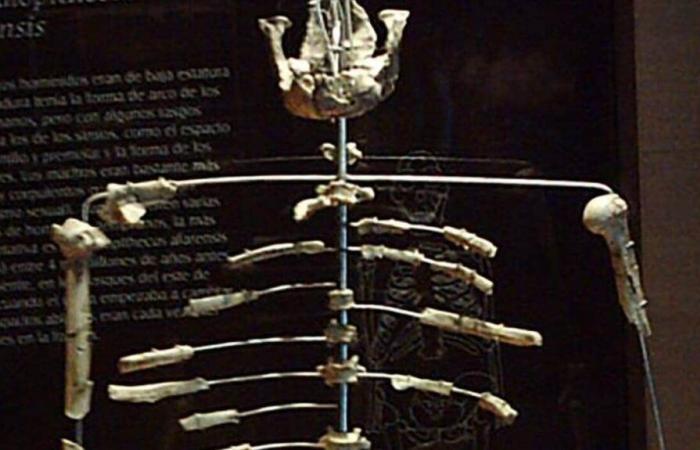The discovery made by Donald Johanson and an archeology student named Tom Gray on November 24, 1974, in Ethiopia, will open a new chapter in human history. That day, in the morning, the two men decided to return to an area already searched twice, just in case…
Evidence that ancient humans walked
After two hours of work, a piece of bone emerges from the sediment, a fragment of ulna, a bone from the forearm which inserts into the humerus. Then, nearby, they discover the back of a small skull. And further still, a femur… The bones seem to come from the same body. It will take three weeks to remove almost half of the skeleton of a hominid approximately 1 m high, having lived more than 3 million years ago. At the time, no such ancient skeletons were known. Additionally, it provides evidence that ancient humans were able to walk on two feet 3.2 million years ago, a trait that was then attributed to more recent, more evolved species.
Read also: PORTRAIT. Raymonde Bonnefille, adventurous scientist and significant link in the discovery of Lucy
A particularly important link
The bones are very fragile, turned to stone by time. You must carefully collect those already cleared, then after removing the layer of alluvium, centimeter by centimeter, put them away and wash them. The whole process takes about two and a half weeks.
Scientists immediately attributed the belonging of these remains to a new species, which they named “ Australopithecus afarensis “. Her physique seems to be somewhere between human and ape, suggesting that she occupied a special place in the family tree of life. Due to the delicate nature of the bones and the small size of the subject, anthropologists deduce that they are dealing with a female. Subsequent fossil discoveries will reveal that the males were much larger.
A Beatles song
That night at camp, the scientists relax while listening to the album Sergent Pepper’s Lonely Hearts Club Band of the Beatles, and more precisely the title Lucy in the Sky With Diamonds when one of them suggests “ What if we named her Lucy? “. An attractive name that will stick with him.
This female australopithecine probably lived in the forest where she fed on fruits and nuts, but also probably by pillaging bird nests, crocodile nests, turtle nests. It had powerful arms and long, curved toes that allowed it to climb trees as well as walk upright.
Lucy's discovery marked a new milestone in research into human origins. She broke the symbolic barrier of 3 million years of age. Although fossil hominids twice her age have since been discovered, Lucy remains a sort of “rock star” of paleoanthropology. His skeleton, made up of forty-seven bones from the same individual, is the most complete known of one of our ancestors from this period.






